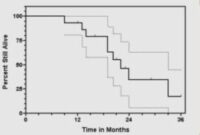Shelf-Life & Stability Studies – Design & Analysis
Shelf-life data possess specific features so that their design and analysis require adapted statistical tools. This workshop uses a variety of case studies to present the most important aspects to consider for a sound determination of product shelf life. Starting from the assessment of the differences between shelf-life and stability studies, participants learn for each type of study how to design efficient experiments to determine the failure time of products accurately. The issues discussed include the timepoint selection, how to handle destructive testing, the experiment size and the choice of samples. The workshop also emphasizes the appropriate ways to analyze life data and to adequately interpret and communicate the results obtained. The principle of accelerated shelf-life testing (ASLT) along with the conditions for a successful use are discussed.


